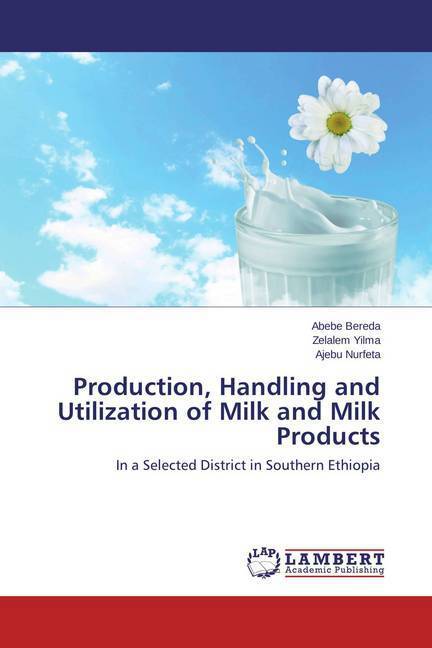
- Afhalen na 1 uur in een winkel met voorraad
- Gratis thuislevering in België vanaf € 30
- Ruim aanbod met 7 miljoen producten
- Afhalen na 1 uur in een winkel met voorraad
- Gratis thuislevering in België vanaf € 30
- Ruim aanbod met 7 miljoen producten
Zoeken
Production, Handling and Utilization of Milk and Milk Products
In a Selected District in Southern Ethiopia
Abebe Bereda, Zelalem Yilma, Ajebu Nurfeta
Paperback | Engels
€ 61,95
+ 123 punten
Omschrijving
The study was conducted in selected district of Southern Ethiopia aimed at assessing the milk production, handling practices, utilization and the quality of milk and milk products. A total of 120 households were participated in the study. None of the respondents wash udder before milking. Olea Africana and Hygenia abyssinica were the most commonly smoking and cleaning plant in the district. Out of total monthly milk production (55 liter per household), 13.5 liters were consumed, whereas the remaining was accumulated for further processing. The average total bacterial count, enterobacteriaceae count and coliform count were, 9.82, 4.15, 4.03 Log CFU/ml, respectively. Generally the mean value of total bacterial, coliform and Entrobacteriacea count observed in the current study were above maximum acceptable limits. The milk produced in the study area should be heat treated and adequate sanitary measures need be taken at all stages of milk handling so that milk of acceptable quality can be produced and reaches the consumer.
Specificaties
Betrokkenen
- Auteur(s):
- Uitgeverij:
Inhoud
- Aantal bladzijden:
- 96
- Taal:
- Engels
Eigenschappen
- Productcode (EAN):
- 9783659625107
- Verschijningsdatum:
- 31/10/2014
- Uitvoering:
- Paperback
- Afmetingen:
- 150 mm x 220 mm
- Gewicht:
- 150 g

Alleen bij Standaard Boekhandel
+ 123 punten op je klantenkaart van Standaard Boekhandel
Beoordelingen
We publiceren alleen reviews die voldoen aan de voorwaarden voor reviews. Bekijk onze voorwaarden voor reviews.








